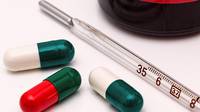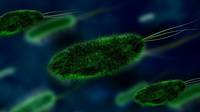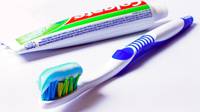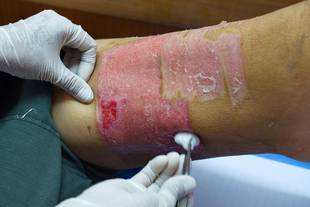
Burns are generally described according to the depth or area of skin damage involved. First-degreeburns are the most superficial.They are marked by the reddening of the skin and swelling, increased warmth, tenderness and pain. Second-degree burns, deeper than first-degree, are in effect open wounds, characterized by blisters and severe pain in addition to redness. Third-degree burns are deep enough to involve damage to muscles and bones. The skin is charred and there may be no pain because nerve endings have been destroyed.
The area of the burn is generally more important than the degree of burn; a second-degree burn covering a large area of the body is more likely to be fatal than a small third-degree burn.
Victims of severe burn should get professional help for treatment, but there are a number of things you can do until such help arrived. If burns are minor, apply ice or iced water until pain subsides. Then wash the area with soap and water. Cover with sterile dressing. A sterile gauze pad soaked in a solution of two tablespoons of baking soda (sodium bicarbonate) per quart of lukewarm water may be applied. Toothpaste may be used as an alternative.
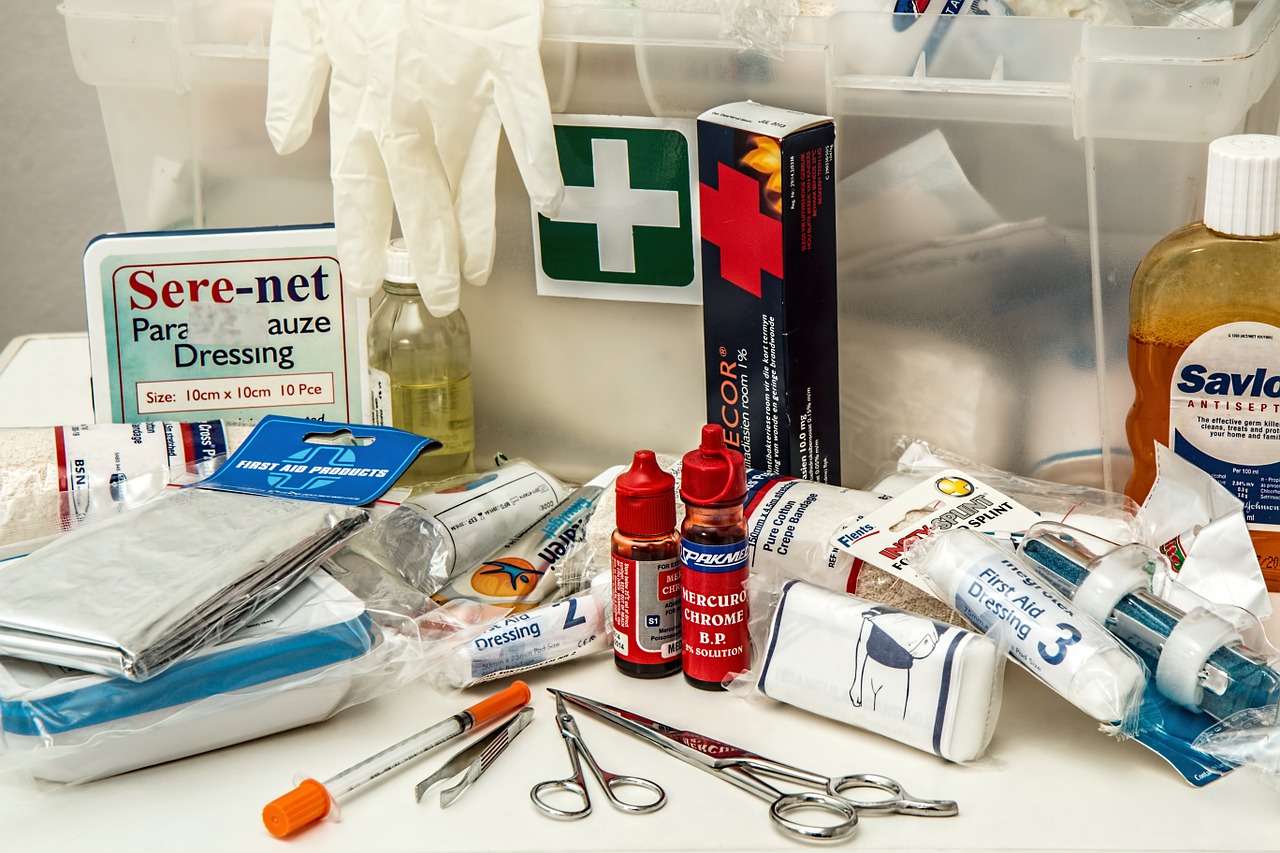
For more extensive or severe burns, there are three first-aid objectives: 1) relieve pain, 2) prevent shock, and 3) prevent infection.
To relieve pain, exclude air by applying a thick dressing of four to six layers plus additional coverings of clean, tightly woven materials. Clothing should be cut away-but never pulled-from the burned areas; where clothing fabric is stuck to the wound, leave it for physician to remove later. Do not apply any ointment, grease, powder, salve, or other medication; the physician simply will have to remove such material before he can begin professional treatment of burns.
To prevent shock, make sure the victim's head is lower than his feet. Be sure that the victim is covered sufficiently to keep him warm, but not sweating; exposure to cold can make the effects of shock more severe. Provide the victim with plenty of non-alcoholic liquids such as honeyed water, tea, or fruit juices, so long as he is conscious and able to swallow.
To prevent infection in severe burn cases, do not permit absorbent cotton or adhesive tape to touch the wound caused by a burn. Do not open the blisters. Do not try to put any antiseptics to the burn. If possible, prevent other persons from coughing, sneezing, or even breathing toward the wound resulting from a burn. Serious infections frequently develop in burn victims from contamination by microorganisms of the mouth and nose.




